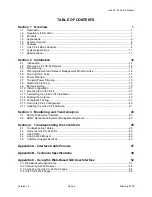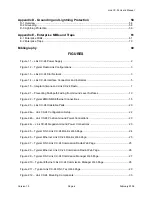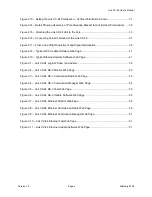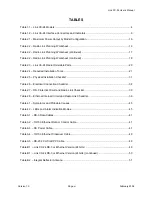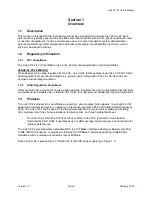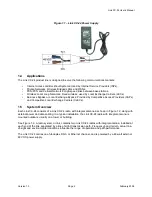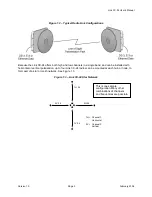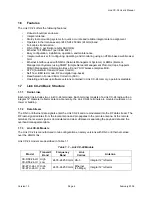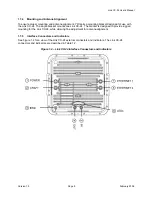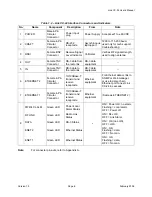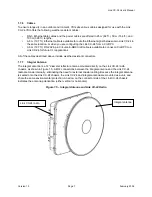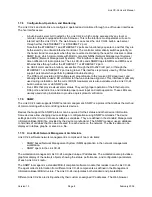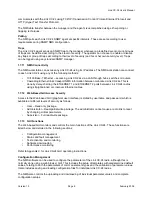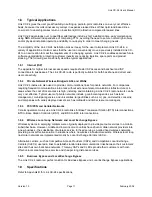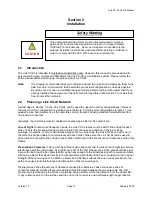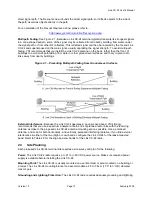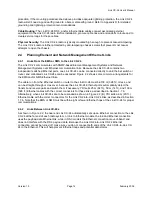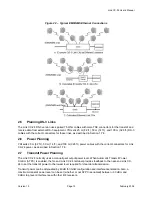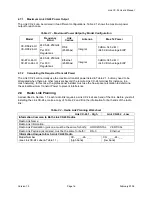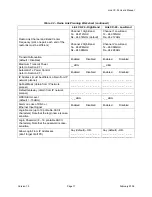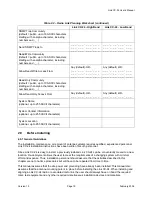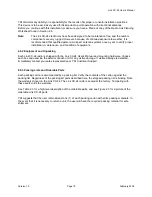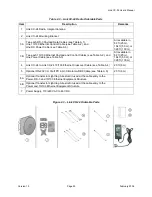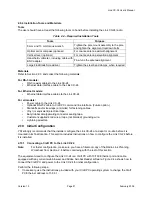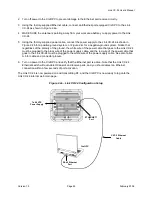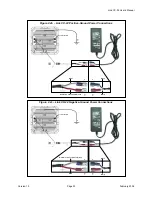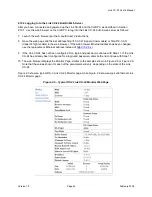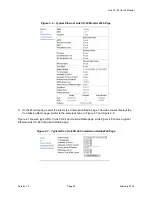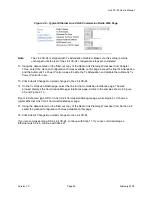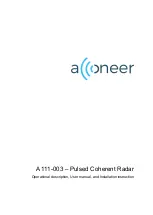
Link CX-24 User’s Manual
Version 1.0
Page 11
February 2004
1.8 Typical
Applications
Link CX-24 gives the user great flexibility in setting up point-to-point radio links on a very cost effective
basis, because it avoids unnecessary outlays in expensive leased lines or fiber optic land-based lines.
Low cost of ownership makes return on investment (ROI) attractive compared to leased lines.
Link CX-24 advantages over copper/fiber alternatives include: short installation time, easy maintenance
using NMS software, independence of competing PTTs, avoiding the need to secure normal right-of-way
and/or physical installation permits, and ability to re-deploy in order to meet changing needs.
The simplicity of the Link CX-24 installation makes it easy for the user to implement Link CX-24 in a
variety of applications. It also means that the user can conveniently move a previously installed Link CX-
24 to a new location to meet the requirements of a changing system. Link CX-24 enables seamless future
software upgradability, protecting customer investment, reducing logistics, spare parts and product
stocking. The following sections briefly describe typical applications.
1.8.1 Internet
(ISP)
The appetite for higher Internet access speeds requires faster ISP access and backhaul and ISP
connections to businesses. The Link CX-24 radio is perfectly suitable for both backbone and direct end-
user connectivity.
1.8.2 Private Network Wireless Bridged LANs and WANs
Link CX-24 radios are also used to provide communications links for private networks. For companies
requiring frequent communications into areas without extensive telecommunications infrastructure or in
areas where the cost of local access is high, installing and maintaining a Link CX-24 radio network can be
very cost effective. Typical users of private networks include: government agencies such as land
management, municipal agencies, and universities; large utilities such as oil, gas, and electric concerns;
and companies with widely deployed assets such as railroads and timber resource managers.
1.8.3 PCS/PCN and Cellular Networks
Cellular operators mainly use Link CX-24 radio links for Base Transceiver Station (BTS) interconnections,
BTS to Base Station Controller (BSC), and BSC to BSC interconnections.
1.8.4 Wireless Local Loop Networks and Local Exchange Bypass
Wireless systems in emerging markets were originally deployed to provide premium services to a mobile
subscriber base. However, middle and lower income countries have driven mobile network providers into
a new business - the substitution of wireless service for fixed service, so-called fixed wireless networks,
providing a cost-effective solution in situations where no wireless infrastructure exists. Wireless local loop
(last mile) networks are implemented mostly by Local Exchange Carriers (LECs).
Alternative carriers, such as Competitive Access Providers (CAPs) and Competitive Local Exchange
Carriers (CLECs) use radio links to establish standard telecommunications links between their customers’
sites and their own backbone networks. This way CAPs and CLECs provide their customers with cost-
effective local area telephone service and cheaper long distance services.
1.8.5 Business Bypass and Local Exchange Bypass
The Link CX-24 radio is a perfect solution for Business Bypass and Local Exchange Bypass applications.
1.9 Specifications
Refer to Appendix B for Link CX-24 specifications.

